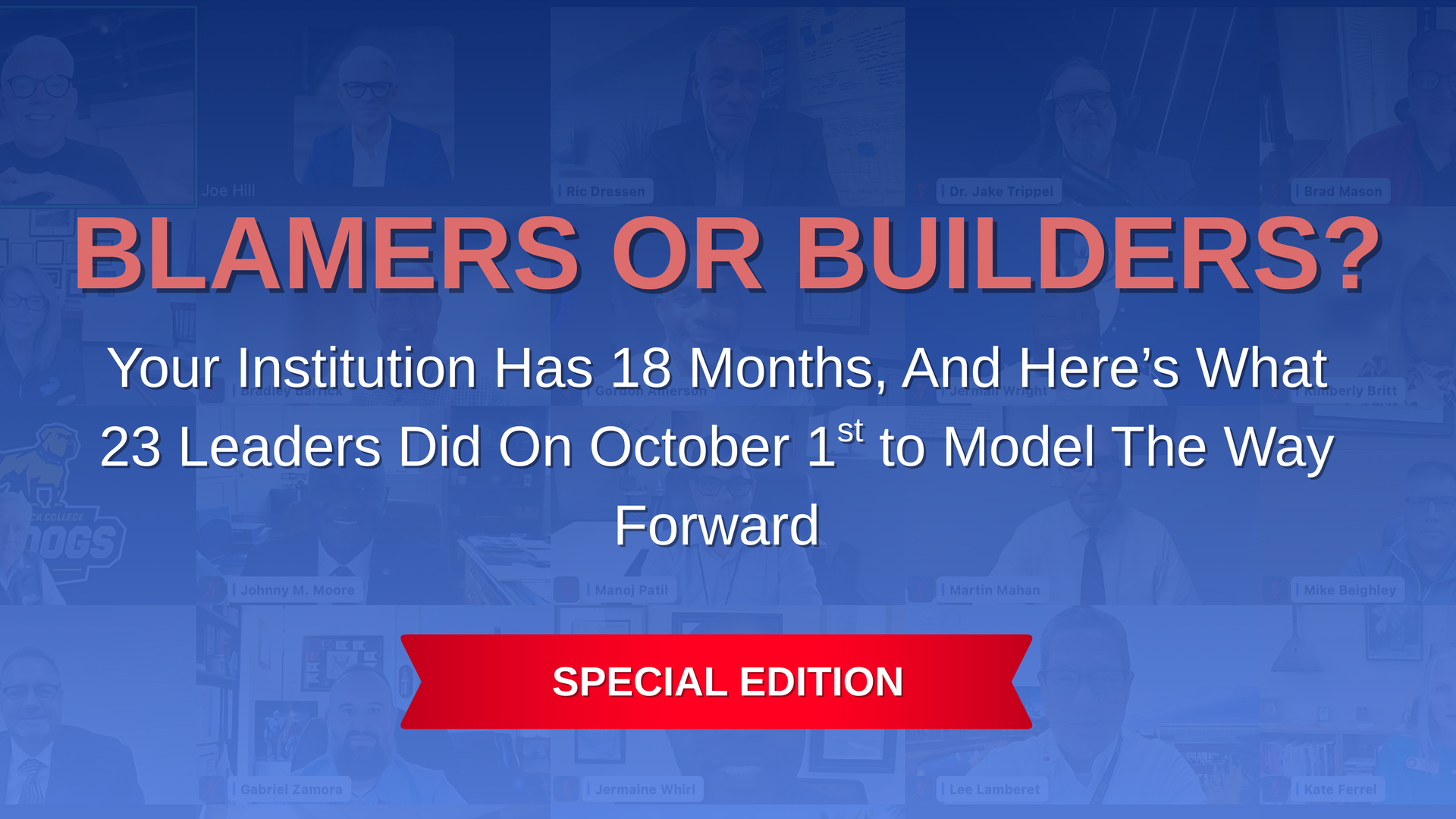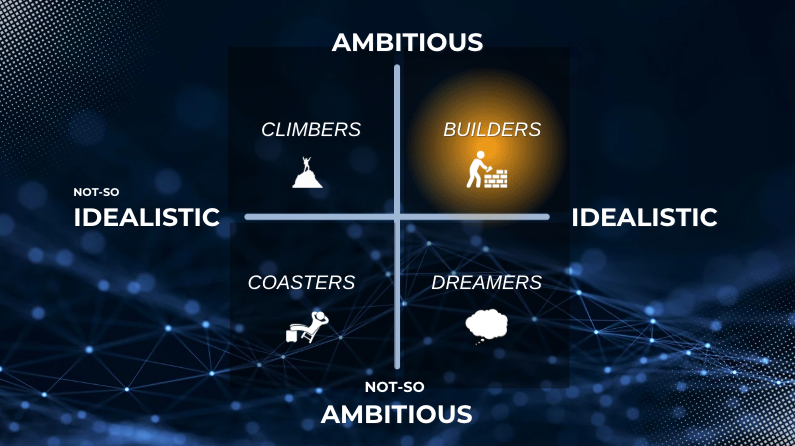Higher Performance Insights | BLAMERS OR BUILDERS?
Your Institution Has 18 Months, and Here's What 23 Leaders Did on October 1st to Model the Way Forward
"We've got about 18 months to figure this thing out."
That's the window educational leaders have to transform proactively—or be forced to transform reactively in survival mode.
On October 1st, 2025, twenty-three district superintendents and college presidents stopped planning alone and started building together. Not the leaders waiting for perfect strategic plans. Not the ones defending comfortable systems. The BUILDERS—leaders whose institutions have grown enrollment 15-40% despite demographic headwinds, who've launched partnerships generating $50M+ in regional economic impact, who've redesigned curricula around employer needs that traditional institutions haven't touched.
What emerged in those 60 minutes wasn't comfortable. It was clarifying.
Here's what 1.7 million lost higher education students and 1.2 million departed K-12 students since 2019 actually tell us: Students didn't drop out. They opted out. Traditional education lost not because our teaching failed, but because our thinking stayed small while the world moved fast.
The market already voted. And it didn't vote for more performance optics.
The Four Types of Leaders
DR. JOE HILL opened with a framework that landed hard:
Four types of leaders populate education today. Coasters worship stability and avoid controversy. Climbers optimize metrics but often overlook whether those metrics matter to students. Dreamers create gorgeous strategic plans that rarely launch. And Builders—rare, hungry, idealistic—who possess what Hill calls "moral ambition."
"We've got about 18 months to figure this thing out," Hill told the group spanning Silicon Valley to Romania, rural Wisconsin to inner-city Arkansas. "We can be builders now, or be forced to build in survival mode."
The room went quiet. Not because leaders disagreed. Because they knew this was right.
Twenty-eight colleges closed in the first nine months of 2024 alone. Each closure eliminates 265 jobs and $14 million in economic activity. The Federal Reserve predicts 80 more higher education institutions will close by 2029.
The question isn't whether disruption is coming; it's whether you're prepared for it. It's whether you're disrupting yourself or waiting for someone else to do it to you.
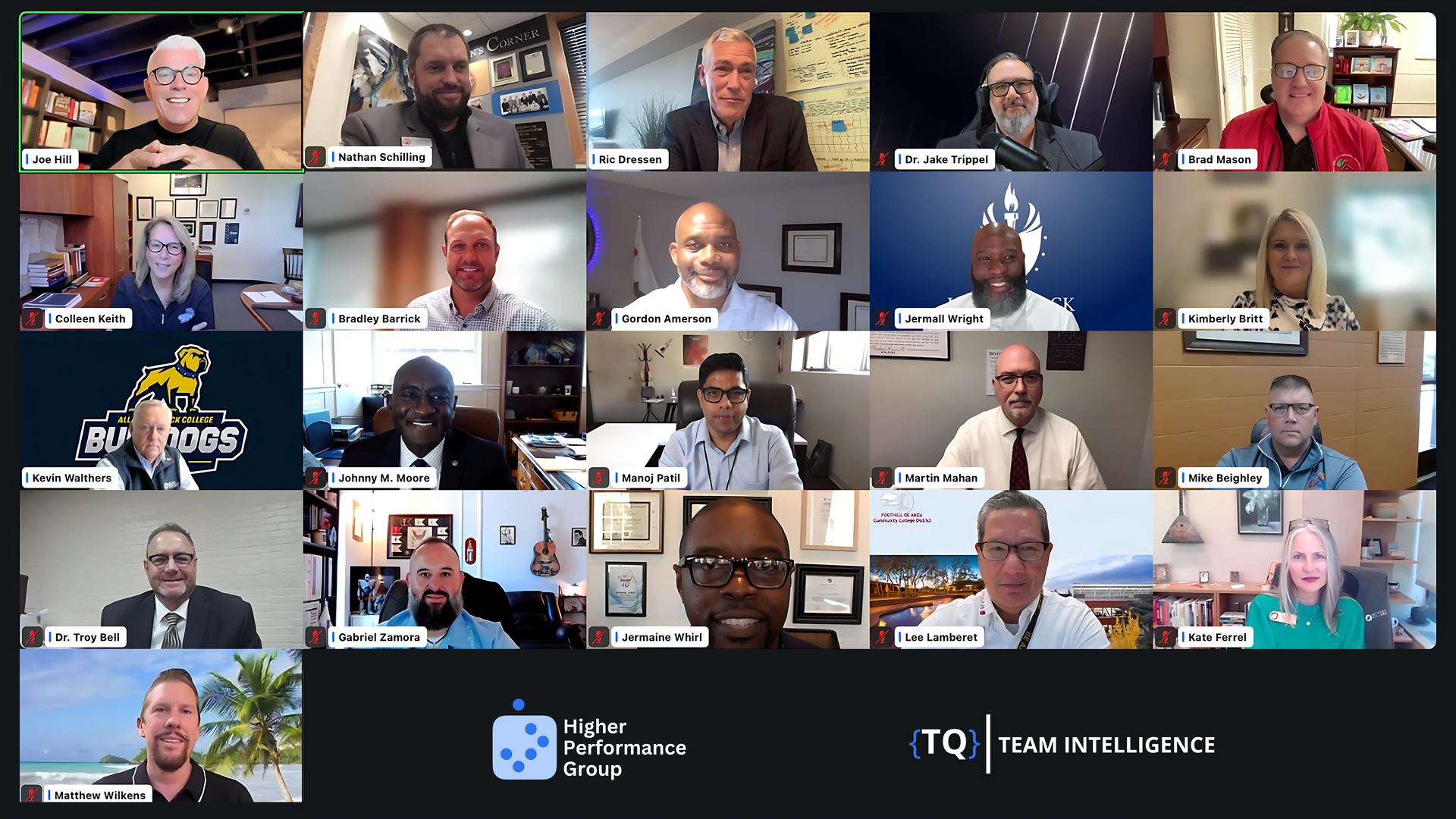
The Identity Crisis No One's Talking About
Gordon Amerson Ed.D.Superintendent of Alvord Unified School District in Southern California named the elephant in the room:
"We fundamentally became educators because we wanted to pour knowledge from our heads and hearts into children. AI stripped us of being the smartest person in the room. We're having to address the identity of what it means to be an educator—that's the crux of the issue."
This is the real disruption. Not technology replacing teachers. Technology redefining what teaching means.
This explains why faculty AI training fails. We're teaching tools when the real issue is existential. The institutions succeeding aren't mandating AI adoption—they're facilitating identity transformation.
Lee Lambert, Chancellor of Foothill-DeAnza Community College in Silicon Valley, added: "It's not just labor in terms of unions. It's not just faculty. Its administrators, too. This is really a people issue—it's about us humans and our willingness to adapt."
The pedagogical shift:
Before: Faculty as primary information source (sage on the stage) After: Faculty as curator, mentor, coach (guide on the side)
Mike Beighley, Superintendent of Whitehall School District in Wisconsin, demonstrated what this looks like in practice:
"We're leveraging AI on depth-of-knowledge level 1 and 2 content—giving us more time with our educators to start building capacity to learn. We can now do applied learning we never had time for because we were too busy teaching content."
Use AI to handle rote tasks. Free educators to build what we never had time for: applied learning, mentorship, human connection.
Your 24-hour action: Ask three faculty members: "If AI handled all the content delivery in your course, what would you do with the freed time that would transform student outcomes?"
Design Backwards from Employer Reality—Or Watch Students Walk
Before: Curriculum designed around what faculty can teach After: Curriculum designed around what employers need graduates to do day one
Dr. Jermaine Whirl, President of Savannah State University, shared the strategy that's working:
"I was at the Federal Reserve Board meeting with executives from Mercedes Benz, Home Depot, Universal Studios. I asked: How are you using AI in your companies? Then we designed backwards."
The Mercedes-Benz reality: They don't interview humans anymore for initial screening. AI bots conduct thousands of candidate interviews simultaneously, 24/7. Their HR staff shrunk from 20 to 2—but those two need skills most business schools don't teach: programming conversational AI, scripting predictive analytics, embedding organizational culture into algorithms.
The Home Depot revelation: They're hiring English majors specifically for AI prompt engineering. Why? English majors craft prompts and scripts better than technical majors. Starting salary: $65,000-$85,000.
"That's a different conversation than worrying about AI taking jobs," Whirl said. "We're worrying about what you're teaching and what your students have to be able to do when they get to us."
Savannah State's response? Require IBM AI-search certification across all freshman courses. Day one. Psychology majors. English majors. Engineering majors. Every graduate leaves job-ready for basic AI functions employers demand today.
Stop asking "What can we teach?" Start asking "What do employers need graduates to do on day one?"
Your 24-hour action: Email one employer in your region. Ask: "How are you using AI, and what skills do you wish our graduates had on day one?" Listen without defending your curriculum.
Create Immediate Value—Not Just Deferred Promises
Before: Student investment pays off in 2-4 years (maybe) After: Students earn credentials, employment, and income while learning
Bradley Barrick, President of Montcalm Community College challenged the fundamental value proposition:
"If you take an accounting class and all you get is three credit hours toward an associate's degree that's two years away, what value are we adding?"
His answer: Embed industry certifications in every course.
- Accounting course → Tax preparation certification → Seasonal employment earning $200-$500 per return
- Biology course → Farm licensing → Agricultural work at $15-$22/hour
- The college pays for certifications
Students aren't just earning credits. They're earning income while they're learning.
"Information is everywhere, but transformation happens through relationships," Barrick emphasized. "It happens through mentorship, it happens through community. We're not just delivering content—we're trying to reach the whole student."
Kate Ferrel, President of Nicolet College in Wisconsin, applied the same principle earlier in the pipeline:
"We partner with K-12 districts starting in fifth grade with intentional touchpoints. There won't be a single student in our catchment area who hasn't had conversations about careers, trajectories, work-based learning."
Notice what she didn't say: "We created a dual enrollment program." Every college has dual enrollment. Builders create systematic pathways that make college invisible to fifth-graders and inevitable by graduation.
The pattern: Students are leaving traditional education because value is entirely deferred. The builders are creating concurrent value—credentials, employment, income—alongside degrees.
Your 24-hour action: Identify one course where you could embed an industry certification this semester. Start with the conversation, not the perfect plan.
The AI Tension Nobody's Resolved
Not everyone in that room agreed on AI implementation—and that's valuable.
Dr. Jake Trippel, Dean of Concordia University-St. Paul College of Business and Technology, brought a corporate perspective:
"I just came from New York speaking to hundreds of executives. Believe me—corporations are struggling just as much as education with AI. We can learn 5, 10, even 25 times faster than we ever could before using these technologies."
But Manoj Patil, President of Little Priest Tribal College, issued a stark warning:
"Our best students at Harvard and Yale—they don't want to use AI. They're building the code for others to use, but they don't use it themselves. Why? The more we depend on ChatGPT to write an email, the more cognitive decline we'll see. The national average ACT is the lowest in history."
The builder's answer isn't choosing sides. It's designing when and how AI enters the learning journey at different developmental stages.
Dr. Nathan S. Schilling, CSBO, Superintendent of Lansing School District in Illinois, just built a $26 million primary center doubling down on play-based, low-screen-time education:
"At what point do you shift and start adding technology and AI? Where's the merge point?"
The question isn't if students will use AI. They already are. The question is: Who's designing the learning journey that makes AI a tool for human flourishing rather than human diminishment?
Don't ban AI. Don't embrace it blindly. Design the developmental pathway.
Build Ecosystems, Not Just Institutions
Before: Institutions optimize their enrollment (zero-sum competition) After: Regions choreograph student pathways (positive-sum collaboration)
RICK BAILEY, President of Southern Oregon University and retired Air Force colonel, reframed everything:
"The best place to hide a needle isn't in a haystack—it's in a stack of needles. That's the paradigm shift we're in. For students, it's not about accessing information anymore. It's about finding the right needle in an endless sea of needles."
We've been optimizing institutions for information scarcity. AI created information abundance. Our value isn't access—it's curation, context, and connection.
Martin Mahan, Superintendent of Fort Smith Public Schools in Arkansas, demonstrated ecosystem thinking:
He partnered with University of Arkansas - Fort Smith, Baptist Hospital, and Mercy Hospital to create the PEAK Innovation Center. Not a partnership on paper. Systematic integration where students get immersed in hospital classrooms regularly.
"Every program in that facility is concurrent credit or credential credit for career abilities. As they walk across the stage, they're quickly employable in this community."
Jermall D. Wright, Ed.D., Little Rock School District Superintendent, faced closing another high school. Traditional response? Consolidate and cut.
Builder response? "We're creating a brand new virtual-hybrid high school with untraditional staffing, untraditional curriculum, and untraditional paths to graduation. We're competing with the homeschool and micro-school movement."
The pattern: Highest-performing educational ecosystems don't compete for students. They choreograph student pathways across institutional boundaries and measure collective impact, not just individual enrollment.
Your 24-hour action: Identify one "competitor" who could become your most valuable partner. Email them asking: "What's one thing about serving students that keeps you up at night?"
The Governance Challenge Nobody Wants
Ric Dressen, roundtable facilitator, issued a critical warning:
"Foundationally, governance in an AI world is essential. We're federally saying no governance at a federal level because we want AI wide open. That puts pressure on you as a leader and your boards to say what the safe guidelines are, what the secure guidelines are, and what the potentials are."
Translation: While Washington debates, you must decide now.
"Rules are tools," Dressen emphasized. "If we can create the borders, we can play very innovatively inside. But if we don't, it's wide open and the dangers really fall."
The institutions thriving aren't waiting for federal policy. They're establishing AI governance that enables innovation within guardrails.
The Non-Negotiable: 20% Strategic Thinking Time
Hill's mandate to every leader:
"You had to have the title of president or superintendent to be on this call because you are the strategic thought leaders of your system. If you default on that, irrelevance will come quickly. 20% of your time must be strategic thinking."
Not operational firefighting. Not email management. Strategic thinking: environmental scanning, scenario planning, ecosystem relationship building, innovation incubation.
Research confirms: High-performing organizations have CEOs spending 28% of time on strategic activities. Low-performing organizations? 11%.
Hill's closing challenge: "Go build something the market really can't ignore. Cause everybody's just watching the market right now. Build something so irresistible that they can't ignore you."
Here's What's Next
The 23 leaders in that October roundtable didn't wait for permission. They didn't wait for the perfect strategic plan. They started building—together.
We're meeting again on November 5th. Limited to 25 voices because the conversation can't scale beyond intimate strategic dialogue.
Here's the uncomfortable question those leaders are answering: Is your strategic plan designed to defend what you have, or to build what students need?
Because students have already voted. And they didn't vote for more performance optics.
The leaders in that room aren't optimizing their institutions. They're disrupting them before someone else does.
When you plan alone, you optimize your institution. When you build together, you transform the entire educational ecosystem.
Coasters? Climbers? Dreamers?
Builders passing on your left.
Your turn: Tag one leader from a different educational sector who should see this. Who's your uncommon collaborator?
If you're a superintendent or college president ready to join the November 5th Builder Roundtable: Email info@higherperformancegroup.com with your name, institution, and one strategic question you can't solve alone.
#EducationalLeadership #BuilderMindset #AIinEducation #HigherEducation #K12Leadership
Do you want more leadership topics and guides?
Join THE GROUP
An online community for higher education leaders, where we offer a library of lessons and guides that can be utilized during your leadership sessions and other resources.
Help Spread the Word
If you found value in this post, we’d love your help spreading the word! Please consider sharing this on your favorite social media platform and tag Higher Performance Group and Dr. Joe Hill. Your support helps us reach and inspire more awesome people like you!
Like What You've Read?
Get practical, research-based ideas to Accelerate
Higher Team Performance delivered straight to your inbox every Tuesday.
More Blog Articles


